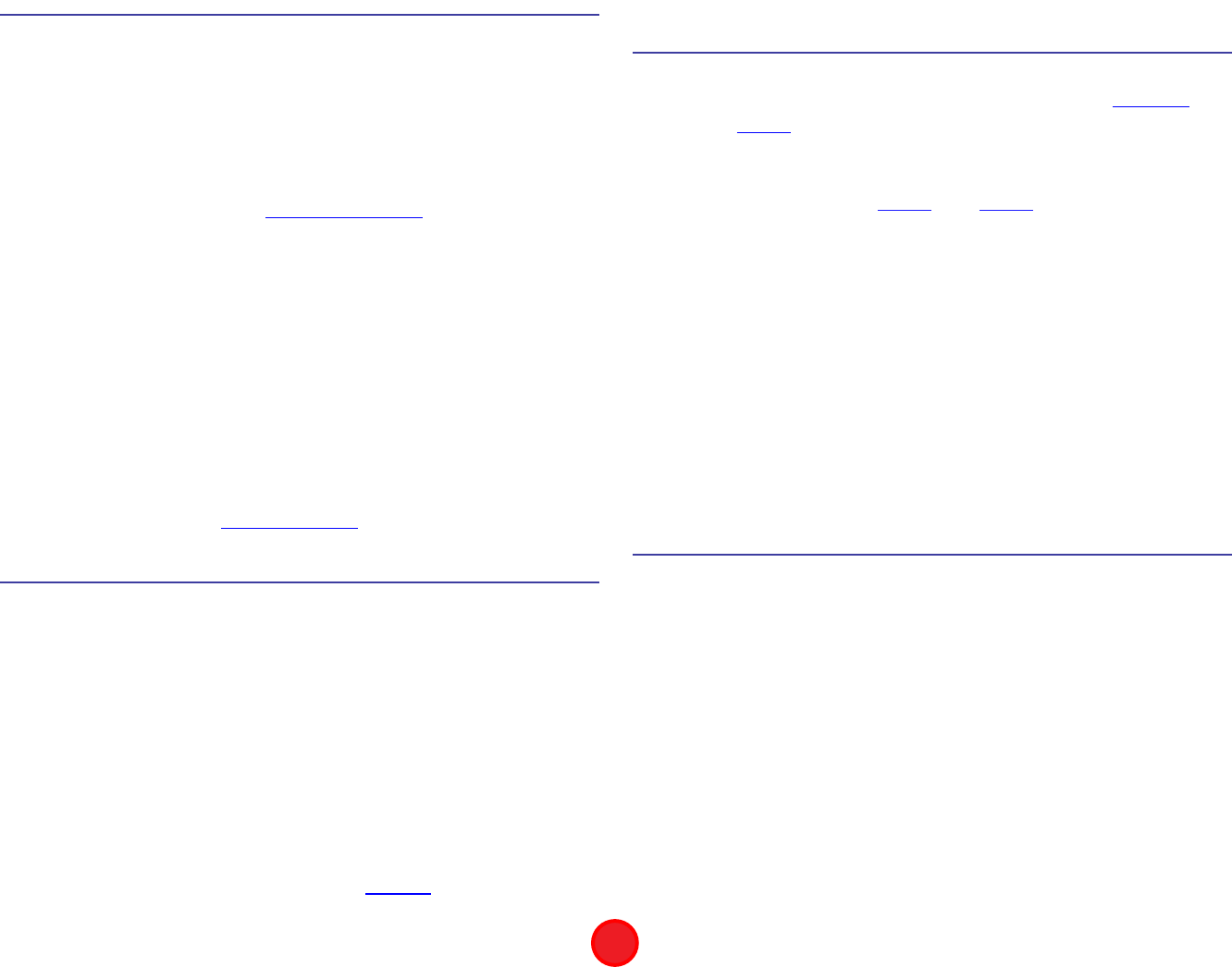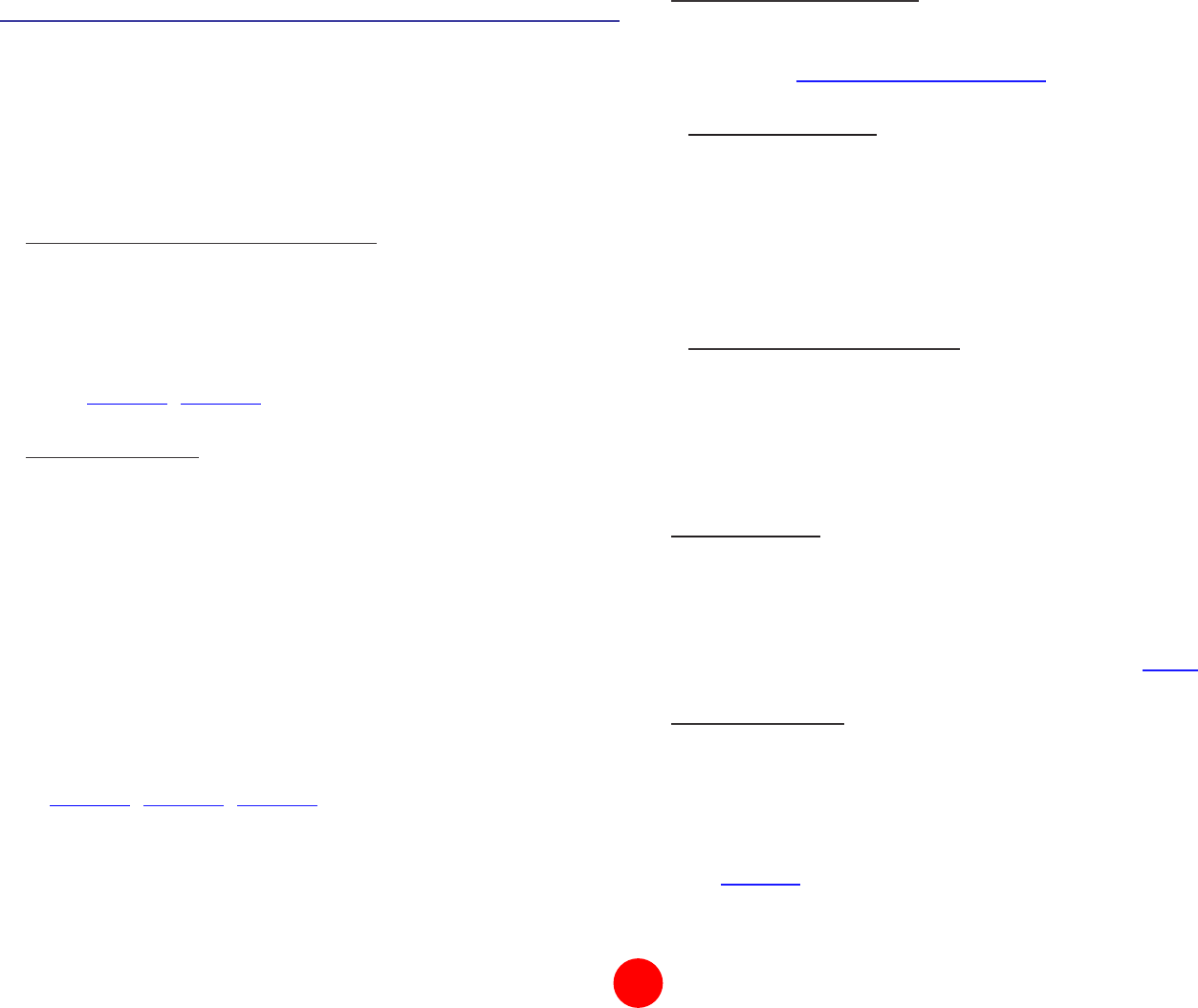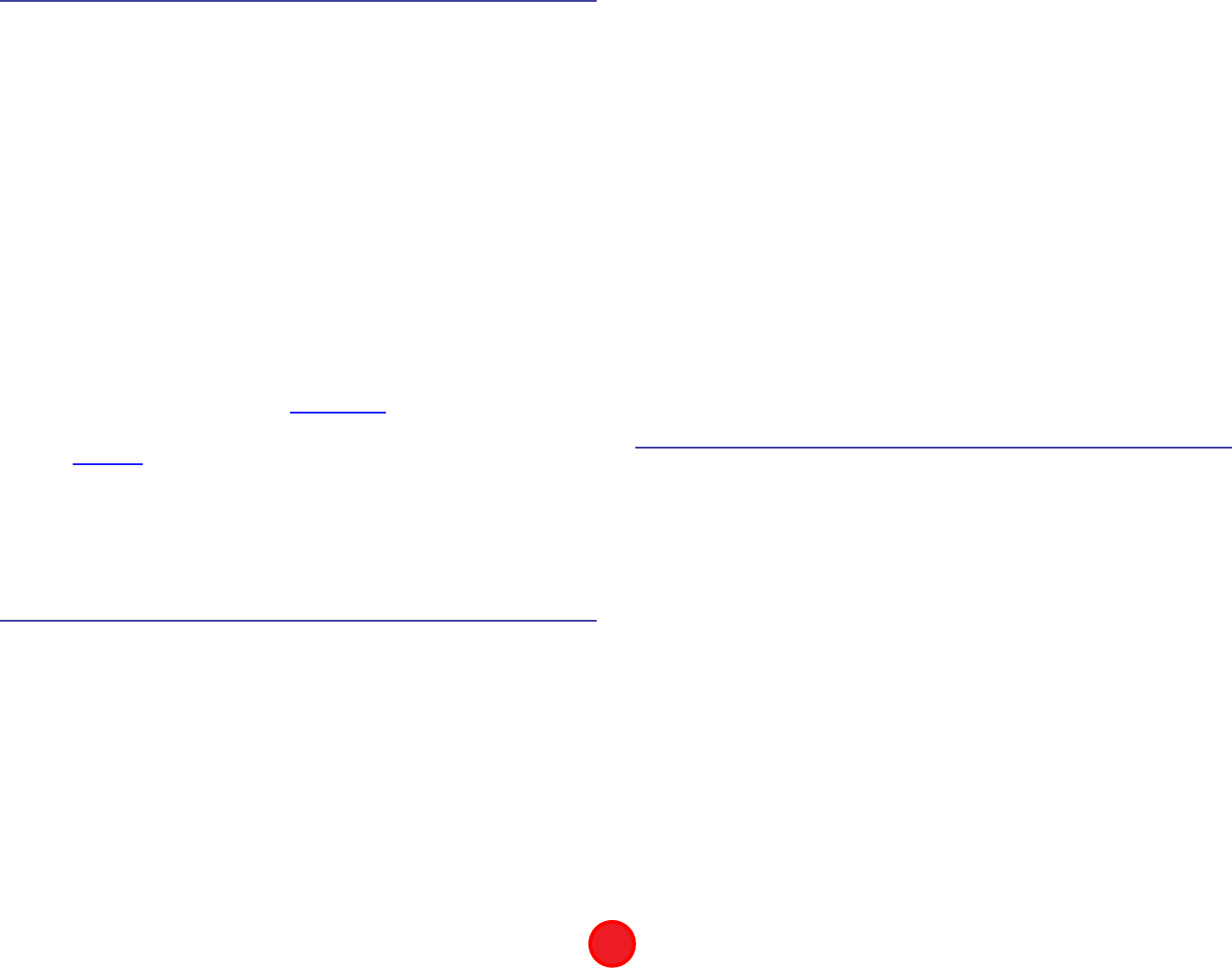
TEXAS OPTOMETRY BOARD
August 2012
VOL XX NO II
Texas Optometry Board, 333 Guadalupe St, Ste. 2-420, Austin, TX, 78701; 512-305-8500 (fax: 512-305-8501)
Expired License ....................................................... 1
Compliance Issues:
Signatures on Rx ............................................. 2
Mobile Practice................................................. 2
O.D.’s in Ophthalmology Practice ........................ 2
Professional Designation ................................... 2
Disciplinary Action ............................................ 3
New Licensee Information ........................................ 4
Survey ................................................................... 4
Substance Abuse Help .............................................. 4
License Renewal ...................................................... 5
Continuing Education ............................................... 5
Amended Rules ....................................................... 6
Ofce Inspections .................................................... 6
Fifty Year Doctors .................................................... 6
Ne w s l e t t e r
A license not renewed in time becomes expired. Practicing
with an expired license carries the same penalties as practicing
without a license. There is no grace period. The Board has im-
posed disciplinary action ranging from administrative penalties to
license suspension for doctors practicing with an expired license.
In addition, criminal penalties may be imposed by local law en-
forcement.
Other issues that may arise during a period when the doctor’s
license is expired include the liability of the doctor to those patients
examined during that period, the liability to insurance carriers for
claims led for that period, and liability for consequences arising
from writing drug prescriptions during that period.
The Board has found that a signicant share of doctors who
do not renew on time fell behind on their continuing educa-
tion requirements and were not able to complete the necessary
courses before the renewal deadline. A doctor cannot renew his
or her license until the Board has received proof that the neces-
sary courses have been completed. A doctor can wait until the
last minute and attempt to catch up on CE hours and renew, but
if there are any hiccups, the doctor may not be able to renew
before the end of the year. The Board cannot guarantee that the
In This Newsletter
Renewing Late - But Still Practicing
Do not ignore expiration date and continue practicing
Contact Board staff to determine quickest way
to obtain needed CE and renew license.
Licenses expire December 31, 2012*•
There is no grace period•
No • guarantee that on-line renewal is available 24/7
Signicant consequences for practicing w/ expired license•
Falling behind on CE a major factor for late renewal•
on-line renewal system will be available 24 hours a day, and the
Board is not responsible for the time needed by course providers
to provide proof of CE attendance to the Board.
Any practice with an expired license, even for one day, subjects
the doctor to disciplinary action. See inside for more details.
* An on-line renewal, if available, may be completed on January
1, 2013 to timely renew.

The Board has proposed amendments to prescription rules
to allow electronic signatures in addition to the manually signed
signatures currently allowed. Sufcient safeguards must be em-
ployed to prevent both unauthorized prescription releases and the
fraudulent presentment of an altered or forged prescription to a
pharmacy, optometrist, physician or optician. The restrictions for
the electronic signatures are the same restrictions imposed by
the Pharmacy Board in Rule 22 T.A.C. 291.34.
Therefore, a doctor may electronically sign a prescription,
either for drugs or ophthalmic goods, by using a system which
electronically replicates the doctor’s manual signature on the writ-
ten prescription, provided:
(A) that security features of the system require the doctor
to authorize each use; and
(B) the prescription is printed on paper that is designed to
prevent unauthorized copying of a completed prescription
and to prevent the erasure or modication of information
written on the prescription by the prescribing doctor.
The proposed amendments to Rules 280.5, 279.2 and 279.4
will be published in the Texas Register.
Signature on Prescriptions
2
Optometrists who practice at nursing homes, industrial sites,
or school sites must comply with Board Rule 279.13.
One provision of the rule requires an optometrist providing
examinations at a site that is more than 100 miles from his or
her ofce to “. . . have made arrangements, conrmed in writing
prior to offering or providing services, for continued care with a
qualied eye health professional with an ofce location or place
of practice within 100 miles of such examination site. Failure to
comply with this rule shall be deemed as practicing from house-
to-house and the improper solicitation of patients in violation of
the Act . . . .”
See the other requirements in Rule 279.13.
Mobile Clinics
Every newsletter contains a list of doctors issued nes for failing
to use the proper professional identication. State law requires
an optometrist to use the following whenever the optometrist
identies himself or herself:
Required Professional Designation
Optometrists practicing in an ophthalmology practice, must
comply with the Optometry Act, including Section 351.353 and
Board Rule 277.7. When an initial examination results in a glasses
or contact lens prescription, all the required elements of eye exam
specied in Section 351.353 must be completed.
Note that Board Rules 279.1 and 279.3 allow an optometrist
to authorize an assistant to make and record some examination
ndings. However, the rules require the optometrist to personally
perform the biomicroscopy examination, the internal ophthalmo-
scopic examination, and the subjective ndings. An optometrist
does not have authority to delegate these examinations.
Optometrists signing an ophthalmic prescription are therefore
required to personally perform the biomicroscopy and internal
ophthalmoscopic examination and make and record the subjec-
tive ndings. This requirement does not change if the optometrist
is employed by an ophthalmology practice or practices with an
ownership interest in a practice with ophthalmologists.
Optometrists in Ophthalmology
Practice: Writing Rx
John Smith, O.D., or•
John Smith, Doctor of Optometry, or•
John Smith, Optometrist, or•
Dr. John Smith, Optometrist•
A therapeutic optometrist must use one of the above identi-
cations, or any of the following:
Jane Smith, Therapeutic Optometrist, or•
Dr. Jane Smith, Therapeutic Optometrist•

3
Letter Agreements with Administrative Penalties
Licensees attended an Informal Conference in Austin with three
Board Members. After the conference and a vote of the Board,
the licensees entered into a Letter Agreement. In addition to the
administrative penalties, licensees agreed to comply with the
Optometry Act and Board Rules.
Practicing Without Renewing License
The Board alleges in the Letter Agreement that two licensees
did not renew their license before the deadline. Prior to re-
newing late, both licensees are alleged to have continued to
practice optometry, a violation of the Optometry Act (see rst
page). Administrative penalties of $500 and $300. Optometry
Act §§351.301, 351.308
Control by Optical
The Letter Agreement alleges that the doctor practiced in a
space leased from a mercantile / retailer of ophthalmic goods,
that a sign stating “Dr. XXX is now accepting walk-in patients,”
was posted on the main door to the mercantile, and that a sign
reading “XXX Family Vision, Dr. XXX,” was positioned next to
the main door of the mercantile. The Board alleges the doctor,
in violation of the Optometry Act, allowed her practice “to be
directly or indirectly used in connection with a mercantile es-
tablishment in any manner, including in advertising, displays,
or signs.” Permitting a mercantile / retailer of ophthalmic goods
to provide business services (advertising) services is a viola-
tion of the Optometry Act. Administrative penalty of $300. Act
§§351.408, 351.459, 351.363
Administrative Penalties
Administrative penalties were issued in the following agreed
settlements for alleged violations of the Texas Optometry Act and
Board Rules.
Disciplinary Action
Professional Identication
Several administrative penalties were issued for failing to
comply with the professional identication requirements of the
law (see the February 2012 Newsletter).
Identication on Rx
Seven doctors received administrative penalties for allegedly
failing to identify themselves as optometrists on prescriptions
written by the doctors. The Board alleges that some of these
doctors also did not use the required professional identica-
tion on business cards and fee bills. Administrative penalty of
$300 for each doctor.
Identication on Ofce Door
Two doctors allegedly failed to correctly identify themselves
on a sign prior to entry into the doctor’s ofce, either by not
having a sign or having a sign that did not identify the doctor
as an optometrist. Administrative penalty of $300 for each
doctor.
Patient Records
Two doctors received administrative penalties for the failure to
record examination ndings in the patient records. The Board
alleged that Rule 277.7 and the appropriate standard of care
required the doctor to include the ndings in the patient record.
Administrative penalties of $200 and $300. Rule 277.7
Control by Optical
The Board alleges that a doctor permitted a mercantile / retailer
of ophthalmic goods to post a sign in the mercantile advertising
the services of the doctor, a violation of the Optometry Act. The
doctor leased space to practice optometry from the mercantile
/ retailer of ophthalmic goods. Administrative penalty of $300.
Act §351.459

A licensee or optometry student with a substance abuse and/or
mental health issue that may affect their ability to provide proper
health care may contact the Board’s Peer Assistance Program for
help.
The Peer Assistance Program is operated by the Professional
Recovery Network which provides assistance to optometrists, phar-
macy professionals, dental professionals, and veterinarians.
After contacting the Professional Recovery Network, the li-
censee or optometry school student will be given the opportunity
to be evaluated. If a problem is identied, a program will be de-
vised for the licensee. Provided that the licensee complies with
the program, the assistance provided and corrected condition
will remain condential. However, if the licensee refuses to enter
into a program or does not follow the program, the Professional
Recovery Network may be required to report the licensee to the
Board.
Work associates or family members may also refer a licensee
or student to the Program.
The Professional Recovery Network may be contacted by tele-
phone (1-800-727-5152). In addition, the Professional Recovery
Substance Abuse Help
4
Your license expires on December 31, 2012, regardless of the •
date you were rst licensed.
You will receive a postcard notifying you that you may start the •
license renewal process (usually the rst week in November).
You must renew your license even if you do not receive the
postcard. Instructions for renewing are on the website. Almost
all licensees renew on the Internet.
You are exempt from continuing education this year. However, •
when you renew for 2014, you will need to prove that you took
16 hours of CE during 2013.
Details about the optometric glaucoma specialist license are •
on the website (most new licensees have already received the
optometric glaucoma specialist license).
Important information regarding optometry practice, including •
new laws and rules, recent disciplinary actions, and common
issues can be found in each Newsletter. The Optometry Board
assumes that all licensees read the Newsletter each August.
The • website has information on maintaining patient records,
treating minors, responsibilities to deaf patients, disability li-
cense plates, controlled substances prescription requirements,
and partnerships, for example. The Main Information page also
has links to Medicare, Medicaid and HIPAA resources.
New Licensees
Survey
In March the Board received over 600 responses to a customer
service survey. The results were provided to the Board and state
government, and placed on the website. Every comment was
presented to the Board Members and of course read by staff. The
majority of comments were positive, but some comments showed
that Board staff had not met expectations. Every effort is made
by staff to respond quickly and helpfully to the many questions
telephoned and e-mailed to the staff.
In response to particular comments, one doctor inquired why
postcards announcing the newsletter and license renewal were
sent instead of just e-mailing notices. Unfortunately, the Board
has not found that E-mail notication reaches every licensee. For
example, this comment was provided by a licensee: “was not
aware of there even being a newsletter...i never received one.“
Some comments inquired about the availability of the Op-
tometry Act and current rules. Booklets for the Act and for the
Rules are available on the website. Each booklet contains a Table
of Contents and an index. The booklets can be viewed on-line,
downloaded, or printed. The Newsletter always identies rules
adopted in the last year, and any changes to the Act.
Several comments found the new on-line renewal process
inferior to the previous process. The Board is working with the
database vendor to make the process better. Pending these im-
provements, please feel free to contact Board staff if there are
problems with the on-line renewal.
Some comments discussed issues that would require changes
to the Optometry Act or other state law. The Board read the
comments, but state agencies are prohibited from lobbying the
legislature to change the law.

Continuing Education
Renewal period expected to start rst week in November•
Postcard is sent to address in database•
Instructions will be on website•
On-line renewal system allows a January 1, 2013 renewal, if •
system is operational on that day
Board cannot guarantee that on-line renewal system will be •
operational at all times
Same on-line renewal system used last year (hoped for im-•
provements may not be ready)
Most doctors will not need to reregister to renew on-line – use •
password created last year
Same fee as last year•
License Renewal
Courses must be approved by the Board – courses are ap-•
proved at each board meeting
Approved courses are listed on website•
Doctor or course provider must send proof of attendance to •
Board
Individual hours are posted on the website (only those hours •
from approved courses)
Last chance to have Board approve medical exemption is No-•
vember 2, 2012
COPE courses are generally accepted, but must still be formally •
approved before credit can be given*
*other state jurisprudence courses are not approved, some
poster sessions are not approved
Last minute attempt to obtain CE – frequently very stressful •
for doctor
Last minute attempt to obtain CE – Board ofce may be able •
to offer suggestions
Insufcient CE hours – substantial monetary penalty and doc-•
tor cannot renew
Network has a website with contact information, a description
of the program, and helpful information concerning addictions,
mental health issues, and intervention information.
WHAT WAS IT LIKE TO PRACTICE OPTOMETRY 57 YEARS AGO?
It was a heady experience for a small town boy to be called Dr.
and to be able to be independent for the rst time in his life, but
it was very different from today’s practice of optometry. First
off, we were “drug less” by law, being deemed incompetent to
properly administer any drug. My equipment, which was “used”
when I got it, would today be in a museum. I still have the record
from my very rst patient in Lake Jackson, Texas. The exam
charge was $5.00 and the bifocal glasses, with frame, were
$22.50. Having to evaluate the patient’s retina through a non
dilated pupil was perhaps one of the most challenging things we
had to do, followed next by looking at the cornea without a slit
lamp. YES, many of us did not have slit lamps in those days,
even those of us who t contact lenses. We could not even use
uorescein without a ‘standing order’ from a real doctor. When
we rst began to use dilate drops it had to also be with such a
standing order. When optometry attempted to change the law in
Texas to allow optometrists to use diagnostic drugs, “medicine”
painted a dooms-day picture of ‘untrained people causing angle
closure glaucoma by using drugs they were not competent to use
nor competent to solve the dire consequences of such use.’
Perhaps the best and the worst change to my practice was
“Therapeutics.” I was in my 35th very successful year when faced
with the question of “What to do about therapeutic certication?”
I really did not want to have to exert the time and energy to learn
all this new stuff, I was very comfortable. However, I realized
that this was the optometry of the future and I certainly did not
want to miss out. Never before had I worked so hard or spent so
many hours trying to learn everything in Jimmy Bartlett’s Second
Edition of “Clinical Ocular Pharmacology.” I knew I was only going
to get one shot at passing the board exam afterwards, because
I was mentally used up. Fortunately, I passed and now had to
Detailed information on CE requirements is on website: • www.
tob.state.tx.us/cegeneral.htm
Thomas Pruett, O.D. 1955
5

New Rules
Since the last Newsletter, the Board amended the following rules.
Use the link for each rule to see the actual text of the rule.
Military spouses - expedited requirements for license applica-
tions. Rule 273.6 was amended to allow a spouse of a active
duty military member stationed in Texas to apply for a license
without some of the requirements for other applicants. Signi-
cant restrictions are part of the rule amendments. Legislation
allowed the Board to make the changes.
Dyslexia – Rule 271.3 was amended to allow license applicants
with dyslexia to take advantage of certain testing accommoda-
tions.
Thomas Pruett, O.D. (con’t) 1955
Doctors actively licensed for 50 years or more were invited
to submit comments. This issue has the most recent comments.
Comments have been edited by the editor due to space issues.
Publication is not an endorsement of the comments.
50 Years of Practice
6
The Board has investigated ofces and initial patient examina-
tions for over 30 years. The current procedure requests doctors to
give the Board’s investigator copies of a few recent patient records
-- only records of rst time patients for whom an ophthalmic pre-
scription was issued. These records are reviewed for compliance
with Section 351.353 and Board Rule 277.7.
HIPAA regulations do not prohibit the copying of the entire
patient record by the Optometry Board, but the licensee may
remove personal identifying information from the copies. This is
explained in a letter presented to the optometrist as the investi-
gator enters the ofce.
The ofce inspection should only disrupt a practice for a short
time. Frequently the visit only requires 15 minutes of the ofce’s
time (depending in part on the speed of the copier). This is a
performance measure set by the legislature for the Board. This
year the Board inspected ofces in Galveston, Baytown, League
City, Pearland, Friendswood, Webster, Dickinson, La Porte, Texas
City, Kemah, San Angelo, Abilene, Early, and Brady.
Ofce Inspections
gure out how to begin my “New” practice and to deal with third
party pay. YES, dear children, that was also new…before that,
it was, ‘doctor did and patient paid’ short and simple!
I hardly know how to offer any advice to a young practitioner,
as a matter of fact, I nd myself calling on them frequently for
advice. However, in so far as enjoying optometry, I still believe
one must love their patients and really desire to treat them with
the utmost respect, then, perhaps the hardest thing to do with the
third party driven mode of practice of today, is to actually enjoy
the practice of optometry. I believe it is imperative to adjust ones
attitude to honestly enjoy whatever one is doing, if they are to
be successful at it. I found that after entering practice, I simply
did not know how to become successful, so I called three of the
most successful optometrists in Texas and asked to spend a day
in each of their ofces. It was an eye opening experience and
helped me to become successful myself. It is my observation,
however, that the restoration of vision and quality opticianry has
taken a backseat to providing eye health in many modern ofces
today. I am constantly bombarded by my former paying patients
about where to go to receive the kind of care they found in my
ofce and especially where to go for glasses that t. This is sad!
Has optometry lost sight of its roots as it has made quantum
leaps into therapeutic care?
After closing my ofce in 2000, I continue to travel to Mexico
twice each year for huge charity clinics where the most wonder-
ful health care givers of all kinds put forth super-human effort
for the benet of truly un-served people. Then four years ago,
I was able to open a charity optometric clinic in a community
center to provide care for local citizens who have no where else
to turn. It is just as exciting today as it was 57 years ago to be
able to restore vision and to refer those needing medical care.
I would advise anyone seeking a rewarding career to consider
optometry.

My name is Lewis Landsman, O.D.,FA.A.O, I have been engaged in the practice of Optometry for over 51 years since graduating from the Uni-
versity of Houston, College of Optometry in 1961. During those years I have had many experiences in the eld beginning as an Army O.D. stationed
at Ft. Hood for three years. I remember my Dean, Dr. Chet Pheiffer, telling me that while I would gain experience, be careful to not get sloppy. I
understood what he meant after examining 36 patients per day. When my tour of duty was over, I opened my own practice and experienced the
starvation period we were taught about. Later I worked with various other O.D.’s and nally left a 9-year partnership to join the faculty at the Uni-
versity of Houston. Wanting to return to the direct contact with patients, I left the University of Houston in 1978 to open a practice in Alvin, Texas
which I eventually sold in 2000. I continued to work with the new owner until 2007 at which time I left and like a boxer who hears the bell, I once
more jumped into the ring and opened a new ofce in Onalaska, Texas.
I have some observation concerning our profession after all these years, some good and some bad. First the good. When I began to practice
in 1961 there was still the claim that “a lens is not a pill.” Therefore, we were well schooled in optics and the art and science of a complete visual
analysis. I knew especially after my association with numerous ophthalmologists both in the service and in civilian life that we were more capable
of providing the best visual care for patients. Their limited understanding of physiological optics was surprising. One of the ophthalmologists at
the hospital wondered why there were prisms on a phoroptor. We were familiar with concepts that present O.D.’s are probably not, such as check,
chain and type or graphical analysis. We understood the affects of different base curves and were excited about the masterpiece and corrected
curve lenses. Lenses have certainly evolved from the 6 base curve crown to the present abundance of choices among materials and styles. I am
saddened by the fact that most patients will never experience the achievements in the eld of optics because the internet and big box retail chains
are not interested in what is best for the patient but what is best for their bottom line prots. The ability to shop the market place for the cheapest
cost to ll a prescription has robbed the public of not only what would be the best available but usually ends up costing them more in dollars lost on
unwearable glasses and keeps them from having what would have been a better correction.
In the eld of contact lenses, the changes have been dramatic. Working with PMMA lenses to achieve a high level of success, we went from 10.0
to 6.0 and back to 9.2 mm diameter and we had to be skilled in analyzing uroscene patterns. I spent many an evening modifying PMMA lenses
adding or changing peripheral curves, reducing diameters and even drilling holes to allow oxygen to reach the edematous cornea. It was in those
early 60’s that we discovered that the lack of oxygen was causing the edema. Along came the soft lenses but even then we still had to deal with
edema and failures. Thankfully the technology continued to evolve and today there are excellent materials and lens designs to accommodate every
visual need. I remember lecturing in the late 1970’s to an optometric group on the use of mono vision technique to correct presbyopia. The major-
ity of the O.D.’s thought I was doing a disservice to the patients and that it would never work. What helped them to appreciate the technique was
the fact that I was wearing it successfully at the time. In 1959, while wearing PMMA lenses I inadvertently drove to the optometry clinic and forgot
to put on my contact lenses. My uncorrected vision of 20/2100 was improved to 20/20 uncorrected. I continued to monitor my visual acuity for
1-1/2 weeks before it began to decrease at which time I reinserted my lenses. When I read the work of Drs. Grant and May in which they corrected
myopia with contact lenses, I knew that is what happened to my eyes years before and became the rst fellow in the International Orthokeratology
Society in Texas. In later years, we were able to add the rigid gas permeable lenses enabling us to t rigid lenses without the associated edema. It
is wonderful to have all of these tools at our disposal to correct our patients vision, but again it is those retailers selling the lowest cost lenses to
the uninformed public that continues to provide us with patients saying “I couldn’t be t with contacts because I have astigmatism or my eyes are
too dry” or “they did try on one pair of lenses but they didn’t work.” I tell the patients that it is the responsibility of the doctor to t the lens to the
patient and not the patient to the particular lens that they were tting in that ofce. The good things that I have seen in optometry go beyond the
technical advances in materials, equipment and include the educational advancement and legal achievements that enable us to provide treatment
for our patients involving eye diseases. Patients now come to my ofce when they have any eye related problem. Now when I tell people I am an
Optometrist they no longer think I deliver babies or adjust the spine.
Over the years, the bad that I have seen has been the shift from the private practitioner who was trying to compete on the basis of his profes-
sional ability to the corporate setting where the competition is in the marketplace with who has the best advertisement, lowest prices to attract the
patients. The doctor now seems to be the best, who can examine the fastest and code with the highest reimbursement. It still bothers me after all
these years to do a basic exam and hear patients say: “ I have never had ALL that done before.” Knowledge of optics and skill in examination and
dispensing doesn’t seem important to patients ordering their glasses over the internet or going to the nearest big box retailer to get the lowest
price. Skill has been replaced by equipment with bells and whistles run by technicians that do not understand why they are running the test. At a
time when we have the knowledge, instrumentation and legal abilities to enhance our patient care I’m afraid it is reimbursements that determine
the quality of care our patients receive. I feel like I have been blessed by God to practice this profession enabling me to provide a good income
for my family enjoying the presence of my wife in the ofce as my buyer and dispensing optician for the last 34 years. The most rewarding aspect
has been helping people to use one of God’s most precious gifts, vision, to the extent it was given them to see, enjoy and gain information from
this world with all the ease and accuracy they should have. We in optometry have the best training to fulll our mission of providing the best, clear
comfortable single, binocular vision the patient is capable of receiving. My hope in the future is that we will not lose sight of this or have it taken
away from us by third parties whose only concern is providing minimum eye care at the lowest possible cost. It may be time for me to think about
retiring my retinoscope or at least slowing down. If someone wants to practice in Onalaska Texas, please call me at 713-906-7966.
Lewis A. Landsman, O.D. 1961
7
